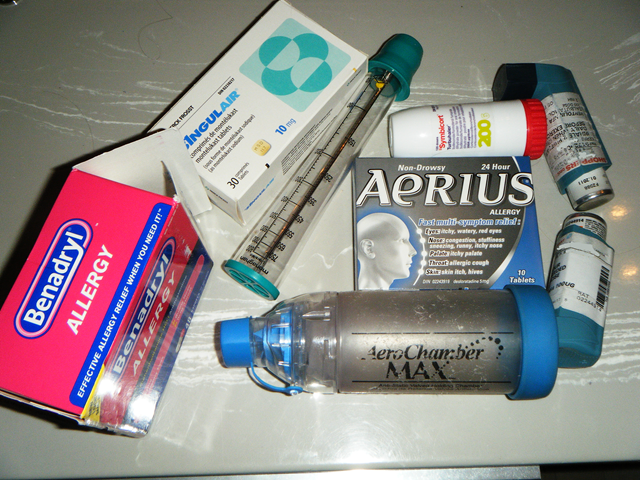
Early antibiotic use in infants increases the risk of the onset of asthma and allergies by the age of 6, a new study suggests. Yale University researchers interviewed women during pregnancy and when their children were 6 years old about their children’s health and medical treatment. Of the 1,401 children in the study, those who received just one dose of antibiotics before 6 months of age were 40 percent more likely to develop childhood asthma and allergies; the increased risk for those receiving two rounds of antibiotic therapy was even higher, at 70 percent.
Although earlier studies have pointed to a link between antibiotic use and childhood asthma, those findings were suspect because in many cases, the drugs were used to treat respiratory infections that are often early symptoms of asthma. to rule out that possibility, infants who were treated with antibiotics for respiratory infections were not part of the Yale study. Researchers also found that children whose parents did not have asthma were still more likely to develop the condition if they received antibiotics as infants.
It’s possible that early antibiotic exposure may suppress infants’ immune systems, leaving them more vulnerable to allergies and asthma, said Michael B. Bracken, professor of epidemiology at Yale and co-author of the study.
BOTTOM LINE: Because treatment with antibiotics in infants younger than 6 months of age increases their risk of developing childhood asthma, researchers suggest physicians avoid unnecessary antibiotic use.
CAUTIONS: Information about the frequency of antibiotic use during infancy was provided by the children’s mothers when the kids were age 6, so actual antibiotic use could be higher or lower than reported.
WHERE TO FIND IT: American Journal of Epidemiology, online Dec. 29, 2010
with child abuse cases, awareness is on the rise a higher percentage of child abuse and violence is reported to police, school officials or medical workers now than in previous years, according to a new study that suggests efforts to raise awareness are working. Researchers at the University of new Hampshire and Sewanee: The University of the South interviewed 4,549 kids under age 18 or their parents about their experiences with violence or abuse in the previous year. Violent or abusive acts ranged from bullying and threatened assault to rape and kidnapping, according to lead researcher David Finkelhor, director of the UNH Crimes against Children Research Center.
They found that more than 50 percent of all abuse cases were reported to authorities — double the number reported in a 1992 study by Finkelhor. Among the cases of sexual assault or abuse, 11 percent of cases were reported, up from 6 percent in the earlier study. The researchers also found that violence and abuse by a family member or peer was less likely to be reported than other types of violence.
While the study suggests heightened awareness of child violence, it also points to areas that need improvement, said Dr. Andrea Gottsegen Asnes, associate professor of pediatrics at Yale School of Medicine. “Recognition is the first step, but it needs to go beyond that to having more evidence-based treatment programs.’’
BOTTOM LINE: The percentage of child and adolescent abuse cases reported to authorities has doubled since 1992.
CAUTIONS: Data on kids under the age of 10 came from their parents, so the number of cases in that age group may be higher.
WHERE TO FIND IT: Archives of Pediatric and Adolescent Medicine, January.
KELLI WHITLOCK BURTON
© Copyright 2011 Globe Newspaper Company.